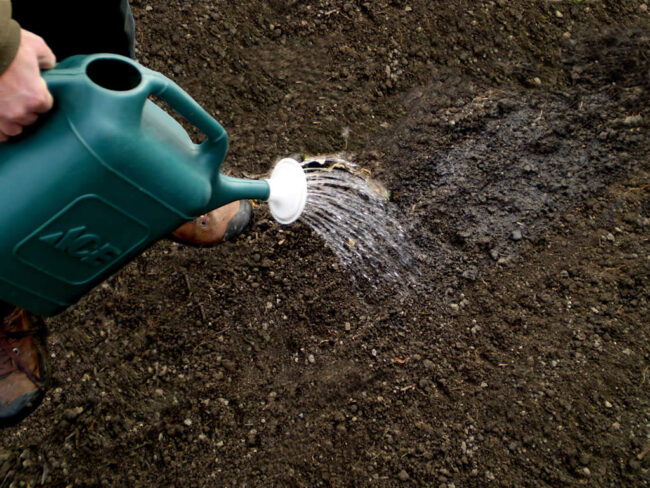Strategy for Growth: Breaking the Klipahs

All living things have within them a vital force motivating them to grow. We are no different. Children and adults alike, we all want to grow. And growth has many dimensions associated with it. Growth can refer to physical size, education, ability or skill, professional development, knowledge or wisdom, emotional maturity, even emunah [faith] and bitachon [trust], etc. But sometimes in life, we find ourselves at a standstill, at a point where we just can’t seem to grow, where we are unable to break through what appears to be some kind of invisible barrier, and no matter what we try to do, we can’t get past it. In spiritual terms, we have run into a קליפה [klipah], usually translated as husk, shell or peel, a spiritual force that seems to prevent growth or that traps that which is inside it from getting out.
Let us say that you want to reach new levels of emunah, but no matter what you do, you seem to be stuck and you don’t see yourself making any progress at all. Or perhaps, you want to grow in your level of bitachon. You’ve been honest with yourself and done an assessment and you know that there are certain areas of your life where you’re not really trusting in Hashem the way that you’d like, the way that you know you should. So fundamentally, you know that you’re still “trapped in the klipahs” that go all the way back to the sins of Adam and Chavah, and you’re not satisfied with the way you were yesterday. You want to grow. You want to be somebody better tomorrow. You want to make progress, but progress seems to elude you. What can you do? Is it possible to break through the klipahs and experience the growth for which you yearn?
We can picture ourselves as little seeds, not the whole seed of course, but just the tiny little embryo locked inside the seed. The seed is covered by a seed coat, which is a type of klipah, and it is this seed coat or klipah which seems to prevent the little embryo from breaking out and growing into the full plant. But is this true? Does the seed coat actually prevent the embryo from growing or alternatively, is the seed coat designed to protect the embryo until it is ready to emerge? Let’s explore this question together.
In order for a seed to germinate, it needs to be planted and watered. Believe it or not, that’s all there is to it (as almost all plants can germinate even in the dark). Make sure you’re planted and then make sure you get watered. The seed will germinate on its own and the seed coat, the klipah will split and crack open allowing the little plant to break out and grow. Let us explain further.
Planting means that the seed must become buried in the ground, in the soil, as it is written (Bereshit 3:19): כִּי־עָפָר אַתָּה וְאֶל־עָפָר תָּשׁוּב (For you are dirt and you will return to dirt). There are two aspects to planting. The first aspect to planting is ענוה [anavah, humility] and the second is שפלות [shiflut, lowliness]. What is the difference between the two? Since anavah is related to the word ענב [anav, grape], we learn that just as a grape needs to be squashed and have its juice spurt out in order to produce wine, so too we must be willing to have our “life blood” spurt out in order to produce a better product, i.e. the growth for which we yearn. This means that we need to develop the trait of self-sacrifice [מוסר נפש, moser nefesh] for the benefit of others. Being moser nefesh can mean a lot of things in particular, but in general, there are primarily two paths associated with it. The first is taking the time to help out others who are in need without desiring any personal benefit or payback, and the second is learning to control oneself such as being insulted and not insulting back or being disgraced and remaining silent. We learn the first path from the well-known teaching of R' Yochanan that we read after Shabbat: אָמַר רַבִּי יוֹחָנָן בְּכָל מָקוֹם שָׁאַתָּה מוֹצֵא גְּדֻלָּתוֹ שֶׁל הַקָּדוֹשׁ בָּרוּךְ הוּא שָׁם אַתָּה מוֹצֵא עַנְוְתָנוּתו (R' Yochanan said, In every place where you find the greatness of the Holy One, blessed be He, there you find His humility). He provides examples from the Torah, from the Writings and from the Prophets describing Hashem’s humility, and in those cases we see Hashem taking care of orphans, widows, converts, and the broken-hearted (see Megilla 31a, Devarim 10:17-18, Yeshaya 57:15 and Tehillim 68:5-6). The second path is best exemplified by the following teaching from Shabbat 88b: תָּנוּ רַבָּנַן עֲלוּבִין וְאֵינָן עוֹלְבִין שׁוֹמְעִין חֶרְפָּתָן וְאֵינָן מְשִׁיבִין עוֹשִׂין מֵאַהֲבָה וּשְׂמֵחִין בְּיִסּוּרִין עֲלֵיהֶן הַכָּתוּב אוֹמֵר וְאֹהֲבָיו כְּצֵאת הַשֶּׁמֶשׁ בִּגְבֻרָתוֹ (The Rabbis taught, About those who are insulted and do not insult, who hear their disgrace and do not respond, who act out of love and are happy in sufferings, the verse says, ‘And they that love Him are like the sun going out in its might’ [Shofetim 5:31]). So we see that both paths of moser nefesh have to do with how one behaves and acts toward others.
Shiflut, on the other hand, refers more to the perception of oneself in relationship to others rather than to one’s actions. As R' Nachman teaches in Likutei Moharan 14:5: שֶׁיְּשַׁבֵּר גַּאֲוָתוֹ מֵאַרְבַּע בְּחִינוֹת שִׁפְלוּת כִּי צָרִיךְ הָאָדָם לְהַקְטִין אֶת עַצְמוֹ לִפְנֵי גְּדוֹלִים מִמֶּנּוּ וְלִפְנֵי בְּנֵי־אָדָם כְּעֶרְכּוֹ וְלִפְנֵי קְטַנִּים מִמֶּנּוּ וְלִפְעָמִים שֶׁהוּא בְּעַצְמוֹ קָטָן שֶׁבִּקְּטַנִּים וְצָרִיךְ לְהַקְטִין אֶת עַצְמוֹ כְּנֶגֶד מַדְרֵגַת עַצְמוֹ וִידַמֶּה בְּעֵינָיו שֶׁהוּא לְמַטָּה מִמַּדְרֵגָתוֹ (A person must break his arrogance based on the four levels of shiflut, for a person needs to diminish himself before those greater than he, and before his peers, and before those less than he, and sometimes he himself is less than even the ones less than he and then he needs to diminish himself relative to his own level and view himself as if he is on a level lower than his actual level). You could even add a fifth level (as is taught by some tzaddikim in our generation) that a person must view himself as being lower than even the wicked!
But planting is not enough. The seed must be watered, and as we learned with respect to planting, so we learn with respect to watering, i.e. there are two aspects to watering. The first is learning Torah; the second is prayer.
Water refers to Torah, as it is written (Shemot 15:22): וילכו שלשת ימים במדבר ולא מצאו מים (And they went three days in the desert without finding water). The Gemara teaches (Baba Kama 82a): דורשי רשומות אמרו אין מים אלא תורה שנאמר הוי כל צמא לכו למים (Those who explain enigmatic verses said that water is nothing other than Torah, as it is written [Yeshaya 55:1], Hoy! All those who are thirsty come to the water). We see the same comparison in the Prophets (Amos 8:11): הִנֵּה יָמִים בָּאִים נְאֻם אֲדֹנָ-י יְיָ וְהִשְׁלַחְתִּי רָעָב בָּאָרֶץ לֹא־רָעָב לַלֶּחֶם וְלֹא־צָמָא לַמַּיִם כִּי אִם־לִשְׁמֹעַ אֵת דִּבְרֵי יְיָ (Behold the days are coming, says Adoni Elokim, when I will send a famine in the land, not a hunger for bread or a thirst for water, but of hearing the words of Hashem).
And as we have explained in many articles to date, prayer is also an aspect of water which can gently water the garden and provide the necessary moisture to germinate the seeds. As R' Nachman explains in Likutei Moharan 5:3, “thunder” is generated from the voice of prayer, which then strikes the rain clouds of our mind causing “rain” to descend drop by drop into our heart (see at length there). Eventually, sufficient rainfall can result in a life-giving river, as it is written (Bereshit 2:10): וְנָהָר יֹצֵא מֵעֵדֶן לְהַשְׁקוֹת אֶת־הַגָּן (And a river goes out from Eden to water the garden). And that is the garden of our heart.
If we employ this four-pronged strategy of humility, lowliness, learning Torah and prayer, no klipah can stand in our way. It may take time, but with persistence, the seed coat will crack and eventually the little seedling will emerge. You might have thought that a seed coat is very strong, but in reality the force of the growing embryo inside is much stronger. You can witness this yourself very easily. Just think about how many times you have seen little blades of grass breaking through asphalt or concrete or even stone. If a feeble little blade of grass can crack a stone, then surely a germinating seed can break through its own seed coat, and all the more so, we can break through those klipahs which have been preventing our growth for so long.
But once you see the klipah beginning to crack—and you will experience this if you are serious about doing what it takes to grow—do not take pride, for this would violate the very principles employed in the first place, i.e. anavah and shiflut. Rather, be grateful that you were given eyes to see the process beginning to unfold. Be encouraged, but don’t think that the klipah has completely given way. Keep going, don’t give up, and eventually the klipah will be lying on the ground and you will be growing up in the sky wondering what the fuss was all about in the first place.
One final point: we should never see ourselves as the fully grown plant or the tree, because there are always more layers of klipahs that we are not even aware of yet. Always see yourself as the little seed needing to germinate and keep your mind focused on the four aspects needed for growth: anavah, shiflut, learning Torah and prayer.






